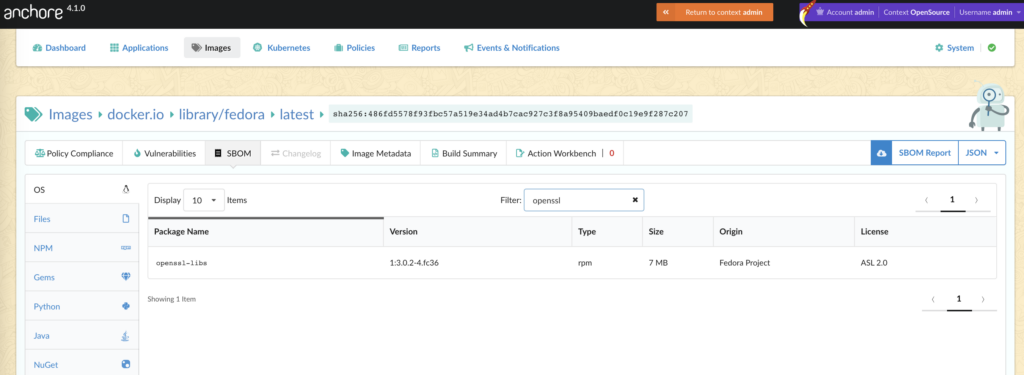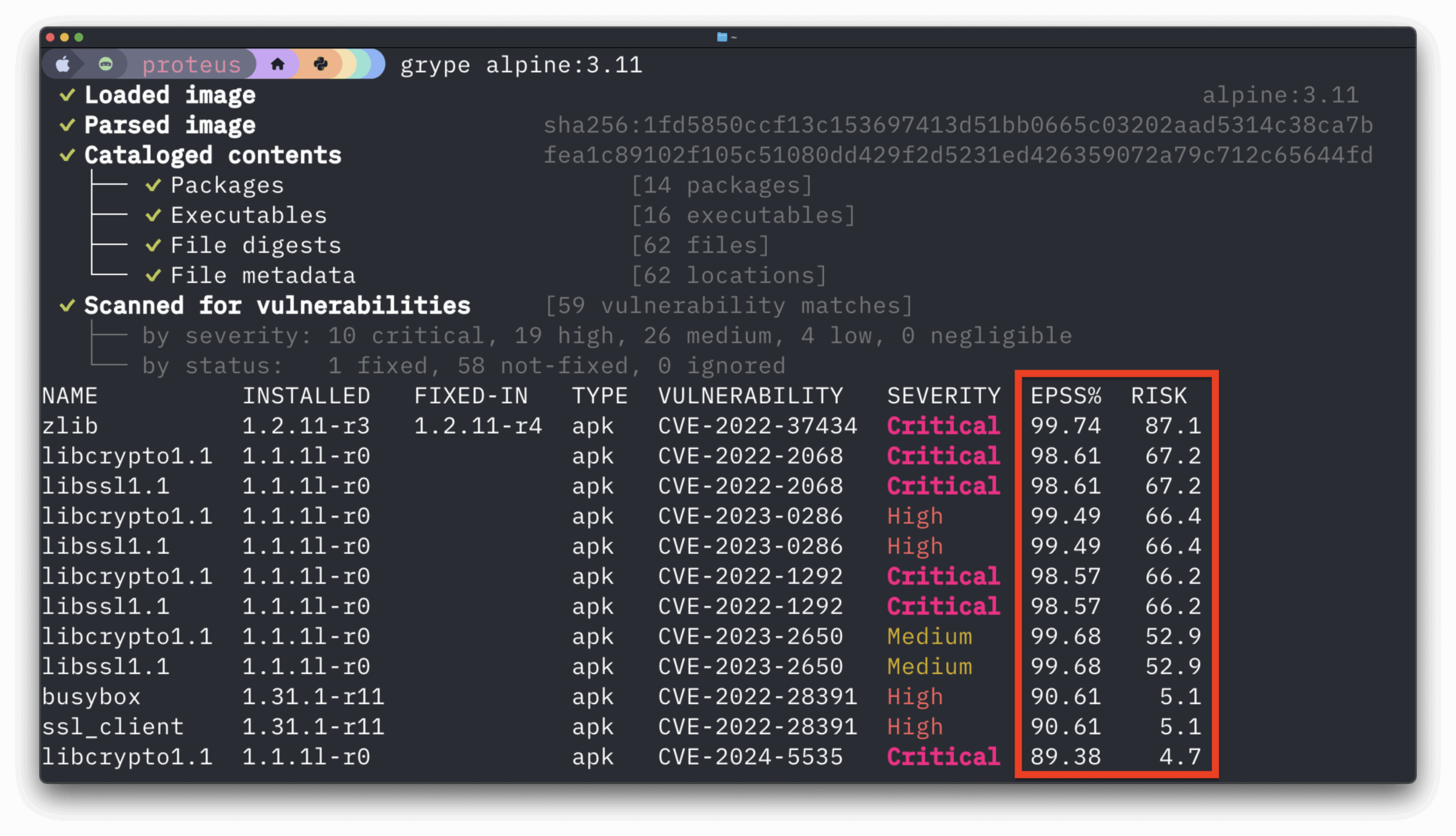Today the OpenSSL project released an advisory for two new vulnerabilities that were rated as having a critical severity, but have been lowered to having a high severity. These vulnerabilities only affect OpenSSL versions 3.0.0 to 3.0.6. As OpenSSL version 3 was released in September of 2021, it is not expected to be widely deployed at this time. OpenSSL is one of those libraries that isn’t a simple upgrade. OpenSSL version 1 is much more common at the time of this writing and is not affected by CVE-2022-3786 or CVE-2022-3602.
The issues in question are not expected to be exploitable beyond a crash by a malicious actor due to the vulnerabilities being stack buffer overflows. Stack buffer overflows result in crashes on modern systems due to a security feature known as stack canaries which have become commonplace in recent times.
Detecting OpenSSL with Anchore Enterprise
Anchore Enterprise easily detects OpenSSL as it is commonly packaged within Linux distributions. These are packaged versions of OpenSSL in which a package manager installs a pre-built binary package, commonly referred to as APK, DEB, or RPM packages. Below is an example of searching a Fedora image for OpenSSL and determining it has OpenSSL 3.0.2 installed:
This is the most common way OpenSSL is shipped in container images today.
That’s not the entire story though. It is possible to include OpenSSL when shipping a binary application. For example the Node.js upstream binary statically links the OpenSSL library into the executable. That means OpenSSL is present in Node.js, but there are no OpenSSL files on disk for a scanner to detect. In such an instance it is necessary to review which applications will include OpenSSL and look for those.
In the case of Node.js it is necessary to look for the node binary located somewhere on the disk. We can examine the files contained in the SBOM to identify /usr/local/bin/node, for example:
If Node.js is installed as a package, it will get picked up without issue. If Node.js is installed as a binary, either from source or from Node.js itself, it’s slightly more work to detect as it is necessary to review all of the installed files, not just a package named “node”.
We have an update coming in Anchore Enterprise 4.2 that will be able to identify Node.js as a binary install, you can read more about how this will work below where we explain detecting OpenSSL with Syft.
Detecting OpenSSL with Syft
Anchore has an open source SBOM scanner called Syft. It is part of the core technology in Anchore Enterprise. It’s possible to use Syft to detect instances of OpenSSL in your applications and containers. Syft has no issues detecting OpenSSL packages installed by operating systems. Running it against a container image or application directory works as expected.
There’s also a new trick Syft just learned, that’s detecting a version of Node.js installed as a binary. This is a brand new feature you can read about in a Syft blog post. You can expect this detection in Anchore Enterprise very soon.
Using Anchore policy to automatically alert on CVE-2022-3786 and CVE-2022-3602
Anchore Enterprise has a robust policy and reporting engine that can be used to ease the burden of finding instances of CVE-2022-3786 and CVE-2022-3602. There is a “Quick Report” feature that allows you to search for a CVE. Part of what makes a report such as this so powerful is that you can search back in time. Any SBOM stored in Anchore Enterprise ever can be queries. This means even if you don’t have old containers available to scan, if you have the SBOM stored, you can know if that image or application was ever affected by this issue without the need to rescan anything.
It should be noted that you may want to search for the CVE and also the GitHub GHSA IDs. While the GHSA does refer to the CVE, at this time Anchore Enterprise treats them differently when creating policy and reports.
Planning for the future
We will probably see CVE-2022-3786 and CVE-2022-3602 showing up in container images for years to come. It’s OK to spend some time at the beginning manually looking for OpenSSL in our applications and images, but this isn’t a long term strategy. Long term it will be important to rely on automation to detect, alert, and prevent vulnerable OpenSSL usage. Even if you aren’t using OpenSSL version 3 today, it could be accidentally included at a future date. And while we’re all busy looking for OpenSSL today, it will be something else tomorrow. Automation can help detect past, present, and future issues.
The extensive use of OpenSSL means security professionals and development teams are going to be dealing with the issue for many months to come. Getting immediate visibility into your risk using open source tools is the fastest way to get going. But as we get ready for the long haul, prepare for the next inevitable issue that surfaces. Perhaps you’ve already found some as you’ve addressed OpenSSL. Anchore Enterprise can get you ready for a quick and full assessment of the impact, immediate controls to prevent vulnerable versions from moving further toward production, and streamlined remediation processes. Please contact us if you want to know how we can help you get started on your SBOM journey.






